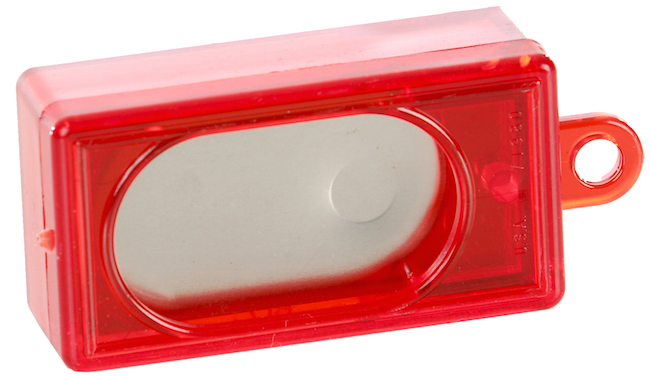
Now that we understand what clickers are and how they work, it is important to learn the right way to clicker train dogs. One of the benefits of using a clicker is that it makes the same exact sound with every use. There is no variation, so it is entirely reliable as a sound association device. Dogs that use clickers in training prove to be noticeably more responsive when given spoken commands. Here are some of the tips about how to train a dog using a clicker:
Clicker Training Your Dog
- Establish the association: Before your dog can be expected to understand what the clicker means, you must first train him to positively associate it with a treat. While you are sitting on the couch and watching TV, bring your dog over with you. Put a treat in your hand, and at random intervals, open your hand and give your dog a treat at the SAME time, click the clicker. Do this every 1-2 minutes for the first 15 minutes, then sporadically over the next half hour. Make sure the timing is irregular so that your dog cannot anticipate when the next one will be. After a while, your pup will turn and look at you expecting a treat whenever the clicking noise is sounded (and always be sure to provide him one). Teaching your dog to associate the click with a treat, is the most important first step.
- Implement the tricks: When your dog does something good naturally, click and give him a treat. This can be when he sits, or refrains from walking in the kitchen –whatever the rule may be. Next, when you give him a simple command and the dog obeys, click and give him a treat.
- Practice sessions: Begin implementing regular obedience training sessions with your dog using the clicker. If you are teaching him to stay, lay down, or speak, work on each separate command 5-10 times and then take a break. On each of the successful commands when your dog obeys, click and give him a treat. Only practice 2-3 skills a day to keep your pup from losing interest or becoming overwhelmed. Try limit practice sessions to 15-20 minutes a day.
- Reward accordingly: When your pup has successfully accomplished a difficult task, or has mastered a challenging trick for the first time, some pet-parents like to reward them with a click followed by a handful of treats. Incentives are always a good training tactic!
- End the practice on a positive note: Sometimes when the practice is particularly hard, and the dog is just not getting the command, it can be tough to end on a good note. To keep your canine excited about the next training session, end by giving him a command you know he can achieve, like “sit” or “come.” Then click and give him a treat to close off the session.
Remember that clicker training is a great long-term practice for helping your dog learn commands and tricks. Have patience if certain skills are taking more time than you’d like, and stay consistent with the practice sessions and click/rewards to help your dog learn the ropes. If you are still having trouble after a month or two, you could always join a clicker training class to get the results you want.

